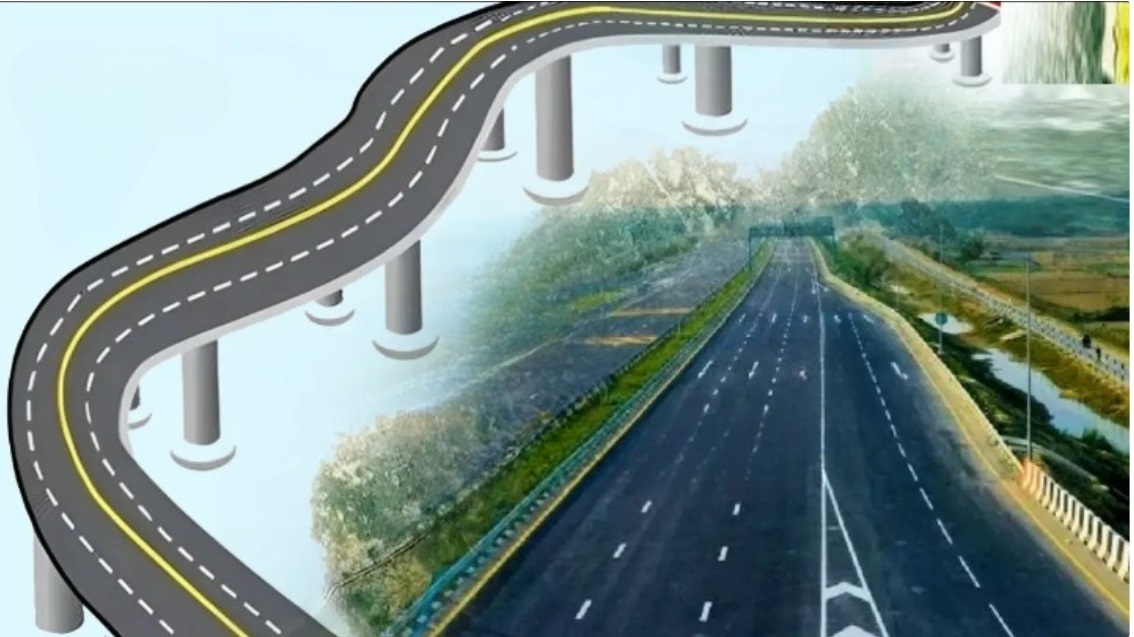In a bid to address chronic traffic delays and improve connectivity within the National Capital Region, Union Road Transport and Highways Minister Nitin Gadkari announced that the Centre is working on a detailed plan to ease commuting between Delhi and Gurgaon. The plan features major infrastructural upgrades, including an elevated corridor from Dhaula Kuan to Manesar and a functional Dwarka Expressway tunnel, among other projects. This article breaks down the key components of the plan, its timelines, and the potential impacts on commuters and the region.
Elevated Corridor from Dhaula Kuan to Manesar
What’s Planned
- Project Focus: The primary feature of the new plan is the construction of an elevated corridor stretching from Dhaula Kuan in Delhi to Manesar in Gurgaon.
- Objective: The corridor aims to bypass the congested surface roads, offering a swift transit route that minimizes delays during peak hours.
Development Process and Timeline
- Feasibility Study: The Highways Ministry has already ordered a detailed feasibility study for these elevated flyovers and tunnel routes. Officials are tasked with filing their reports within the next three months.
- Strict Deadlines: In a high-level meeting with Minister of State Rao Inderjit Singh on Monday, 7 April, strict deadlines were set not only for this project but also for the Gurgaon-Pataudi-Rewari national highway and the Manesar elevated road.
- Contracting Process: New contractors will be selected via fresh tenders by 15 April, with construction set to commence in June.
Impact on Daily Commutes
- Reduced Travel Time: By diverting long-distance through traffic from heavily congested urban roads, the elevated corridor is expected to significantly cut down travel time for daily commuters.
- Enhanced Road Safety: A segregated and dedicated roadway minimizes the likelihood of collisions between local and intercity traffic, promoting safer travel.
- Economic Growth: Improved connectivity along this corridor can attract new investments, spur residential and commercial development in Manesar and surrounding areas, and ultimately boost the regional economy.
Dwarka Expressway Tunnel and Enhanced Regional Connectivity
Key Features of the Tunnel Project
- Accelerated Connectivity: The much-awaited Dwarka Expressway tunnel is on track to become functional by the end of this month. This development is seen as a crucial step in linking Delhi more efficiently with Jaipur, thereby enhancing long-distance travel in the region.
- All-Weather Operation: The tunnel is designed to operate seamlessly regardless of adverse weather conditions, a feature that is expected to reduce delays during the rainy season or on foggy mornings.
Additional Infrastructure Projects
In addition to the elevated corridor and tunnel, several other projects are on the agenda that aim to further improve regional road networks:
- Kherki Daula Toll Plaza Relocation: To reduce bottlenecks on the highways, there is a long-pending request to shift the toll plaza. The relocation will be to Pachgaon, where the Haryana government has already identified suitable land.
- New Four-Lane Road from Nuh to Firozpur-Jhirka Border: With an investment of Rs 400 crore, this road is expected to enhance connectivity and support smoother regional travel.
- Local Improvements: Upgrades include enhanced underpasses and the construction of new foot overbridges at key junctions such as Rathiwas and Salawas, along with widening activities along the Masani barrage stretch in Dharuhera.
Broader Implications for the Region
For Commuters
- Smoother Journeys: The combined effect of the elevated corridor, the Dwarka Expressway tunnel, and other planned infrastructure improvements means faster and more predictable journeys.
- Reduced Stress: With significantly less time wasted in traffic congestion, commuters can expect lower stress levels and improved daily productivity.
For the Economy
- Investment Magnet: Improved accessibility and reduced travel times are attractive conditions for businesses and investors, potentially leading to increased investments in residential, commercial, and industrial projects.
- Job Creation: The execution of these projects will provide both short-term construction jobs and long-term opportunities in sectors such as logistics, urban planning, and transportation services.
For Urban Development and Sustainability
- Catalyst for Urban Renewal: The upgrades are likely to spark a shift in urban dynamics, encouraging a move away from outdated, congested routes toward modern, efficient transportation networks.
- Environmental Benefits: With reduced vehicular emissions due to less congestion and shorter travel times, these projects could contribute to improved air quality in the NCR region.




